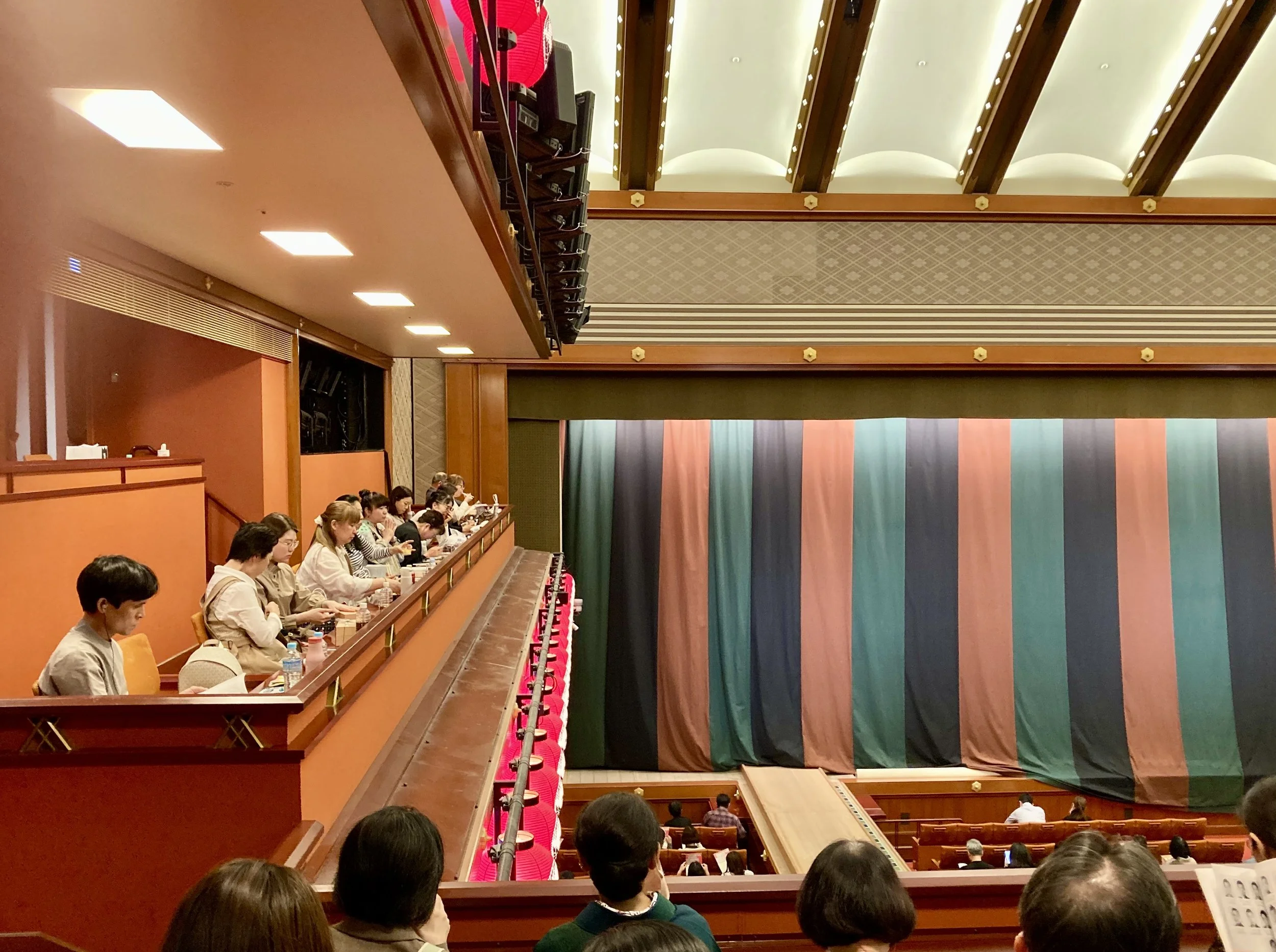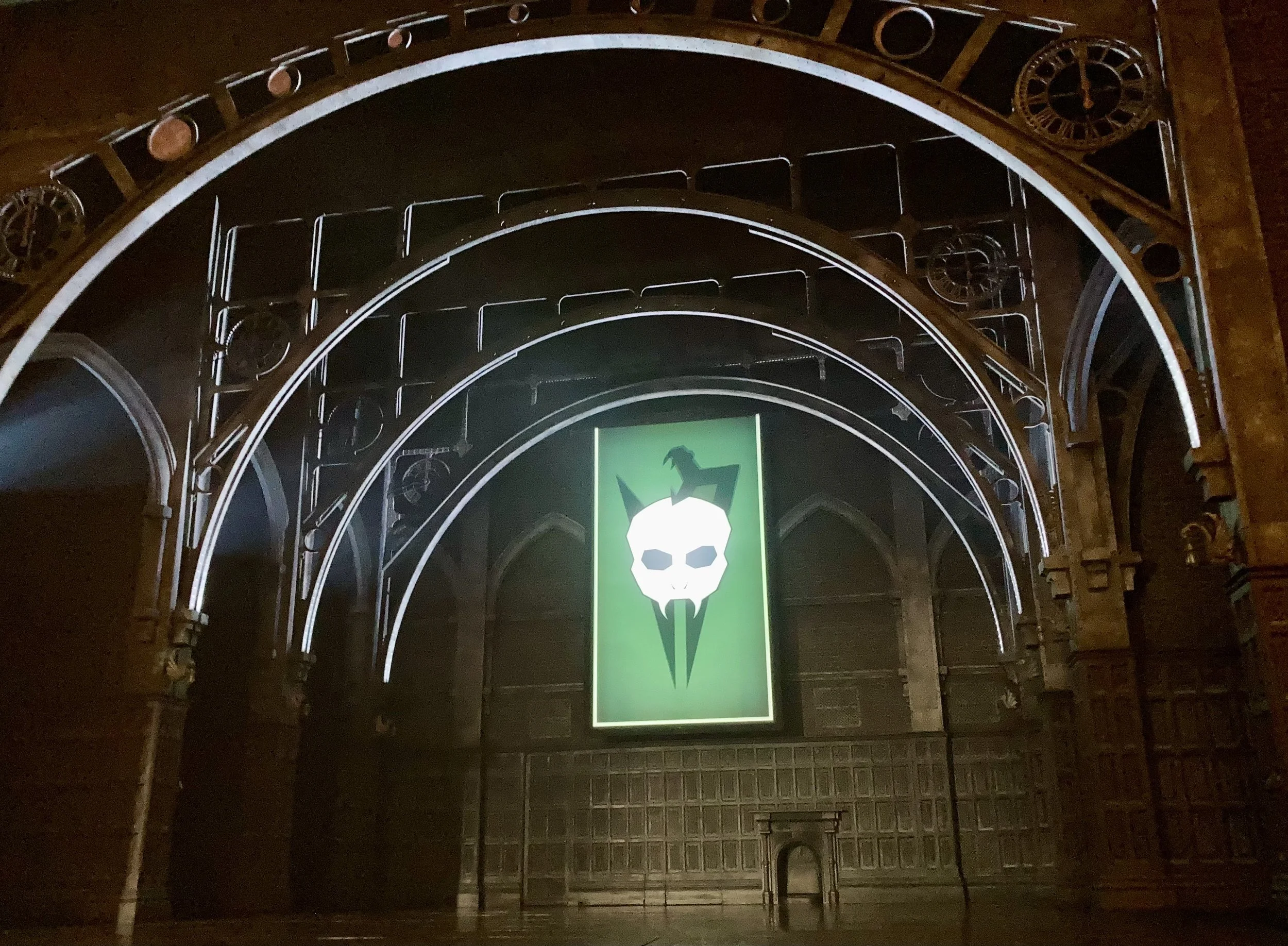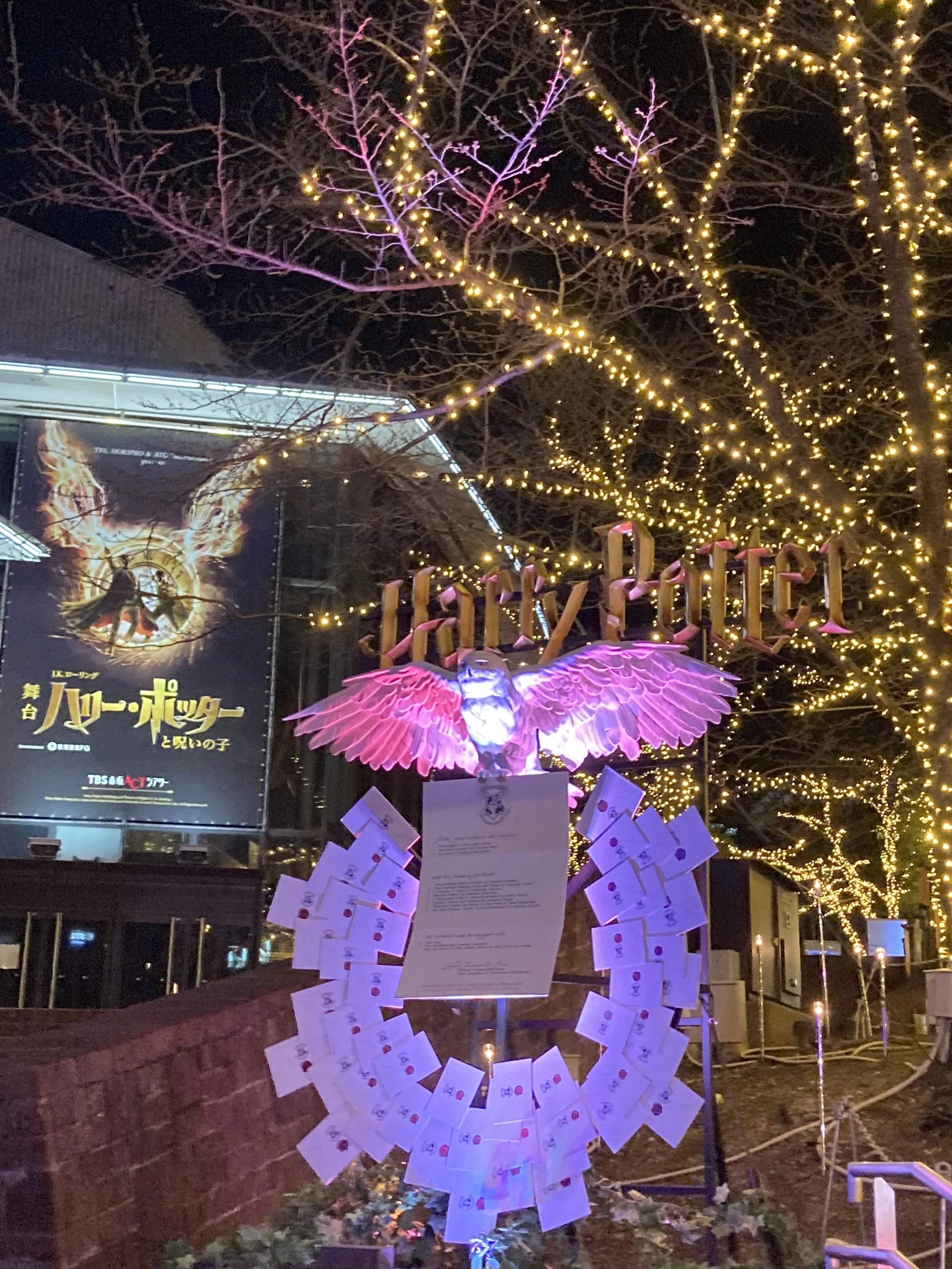WEBF on… Theatre culture in Tokyo, Japan
Besties, you know how we love bringing you news and reviews from the West End and across the UK, but we do like to occasionally venture further afield. One of our reviewers Nick Wayne recently returned from a trip to Tokyo, Japan where he enjoyed three very different theatrical experiences in the city.
At the TBS Akasaka Theatre, we saw Harry Potter and the Cursed Child in Japanese with a handheld English translation. This is the one-part version that now plays around the world based on a cut down version of the two-part West End production that was workshopped in London just after the Covid pandemic. Sadly, there is no Hagrid and the scenes with the young Harry Potter have gone but the main story is intact and recognisable from the original styling and plot.
The story follows Harry Potter and Draco Malfoy’s sons, Albus and Scorpius’ years at Hogwarts and their attempts to turn back time to save Cedric Diggory who was killed in the Triwizard tournament in the original books and films. At its core, it remains a heartfelt tale of the challenges and struggles of father and son relationships which resonates with any parent. All of the wonderful special effects remain in the show with Transfiguration and Polyjuice spells, the brilliant disappearance in a telephone box, a clever animated fight scene in Harry’s home with Draco, the Floo Network, the Patronus, and a spectacular final battle with plumes of flame shooting across the stage. The show remains one of the technically most brilliant productions in world theatre. Yet while the story has a strong emotional pull, the portrayals do not convey that nuanced engaging variation of tone and while this may be lost in translation, it is also, we believe, part of the Japanese theatrical style of delivery of the lines.
Interestingly, the audience watched the three and half hour production in almost complete respectful silence and some of the comedic elements, especially around the portrayal of Scorpius, do not get the reaction they get in London. However, after the third polite round of applause at the end, the audience did rise in appreciation for a standing ovation to show that they had indeed enjoyed the show. Another difference is in casting. In London, the main characters are played by single performers with covers and standbys, whilst the Japanese cast appears to be a group of alternative principals who play different performances. Also, oddly, the Saturday performance started at 12.15 with no evening show!
One thing that the Japanese production does exceed the London version in was in the street dressing around the theatre which is outstanding with an array of house flags, a giant time turner and the white owl that delivers Hogwarts invites to new students. The tunnel from the nearest tube is dressed in the famous portraits that adorn Hogwarts walls.
In contrast, we also bought tickets for Kabuki Theatre at the Kabukiza Theatre. This is a traditional style of Japanese theatre which we might describe as a cross between Shakespeare in traditional costume and opera. The word can be translated into Ka, meaning song; Bu, meaning dance; and Ki meaning art. We saw three acts from the Treasury of the Loyal retainers, one of three great classics of their repertoire. Once again, we followed the story with a handheld translation device, but it was clear that most of the audience were familiar with the performers and story, and regularly burst into short rounds of applause at various lines and poses adopted on stage, and this appeared to be part of the experience.
The first part we saw was The Yamazaki Highway and Kanpei's Suicide. In this tale, Okaru is sold by her family to the pleasure quarters of Kyoto but her father is killed by a thief on way back from collecting the fee. Kanpei kills the robber in a hunting accident but because he thinks he has killed his father-in-law, he commits suicide.
Between the first and second acts, most of audience tucked into a Bento box of Japanese sushi, much like the audience at Glyndebourne of Garsington enjoying extended intervals for refreshments!
In the second part, The Ichiriki Teahouse, Okaru is now a courtesan and discovers a plan by Yuranosuke to kill Moronō. When he realises, she has discovered his plan, he offers to buy out her contract, knowing he must kill her to keep the vendetta a secret.
Okaru's brother Heiemon has also come to the teahouse and when he hears that Yuranosuke is to buy out his sister's contract, he realises his true intentions. But Yuranosuke spares Okaru and allows Heiemon to join the vendetta.
The third part was The Attack on Moronō's Mansion. They attack on a snowy night. After a fierce fight, they find Moronō hiding in a charcoal shed and take revenge for their Lord's wrongful death. This shorter act of just twenty minutes was the best with wonderful fight scenes and clever staging with a lovely perspective to the bridge that the army march over.
Two significant staging effects are used throughout. Firstly, there is a hanamachi, flower path, which is a walkway that extends through the audience and through which most entrances take place and final bows are received. Secondly, each scene is set behind a brightly coloured curtain that then drops to reveal the scene and cast. This effect is found in UK Theatre where the effect is called the Kabuki drop to create dramatic reveals.
Like Opera in a foreign language, Kabuki is something of an acquired taste but is clearly enthusiastically received by its local audiences. The declamatory style of delivery with exaggerated movement and poses is how we imagine Sir Henry Irving might have delivered Shakespeare in the 19th century. We could also see how the delivery style might have influenced the performance style of the cast of Harry Potter with over dramatic emphasis and lack of subtlety. If you visit Tokyo, you can buy a one-act ticket on the day to experience this as the overall four-hour experience is quite hard work!
The third cultural experience was the Rakugo comedian, Hayashiya Someta. This is a verbal comedy, literally, a story with a fall, where a solo storyteller sits in a platform with props and recounts short stories. He has performed at Edinburgh Fringe and delivers his routine in English with a range of exaggerated gestures and vocalisations. He also includes some paper cutting gags and a curious figure made from bamboo canes. He draws the audience in with regular calls for applause and brings audience members on stage to replicate his actions. It is all a little bizarre but with some good comic moments, a bubbly personality, and charisma that curiously draws you in and holds your attention.
Of course, there is much to intrigue and excite about a visit to Japan from the Shogun and Samurai castles, The Buddhist Shrines and Shinto Temples, the Sumo Wrestling, the tales of the Kamikaze pilots of World War II, the horror of Hiroshima and Nagasaki, and the use of the sites as springboard for Global peace, the extraordinarily immersive art of TeamLab Planet in Tokyo, and at this time of year, the spectacular cherry blossom everywhere. The culture is very different, formed in the isolation periods of seventeenth and eighteenth centuries with powerful warlords , the horror of the Second World War seems to have evolved the culture into a hugely respectful demure and honourable one with hints of Westernisation. Perhaps in the theatre world, we see this most clearly with the film franchise of Harry Potter now on stage, another film franchise, Back to the Future, opens this week on stage, and we are sure Clueless will follow in the next few years.
As a theatre lover, it is fascinating to visit overseas theatre and see how they stage their productions. We have seen shows in Paris, Prague and Vienna and now Tokyo, and most have had an English translation to assist our appreciation. As with all live theatre, it is an experience and being part of the local audience certainly adds to that. We urge you to give it a try next time you are in an overseas city.
Nick Wayne



